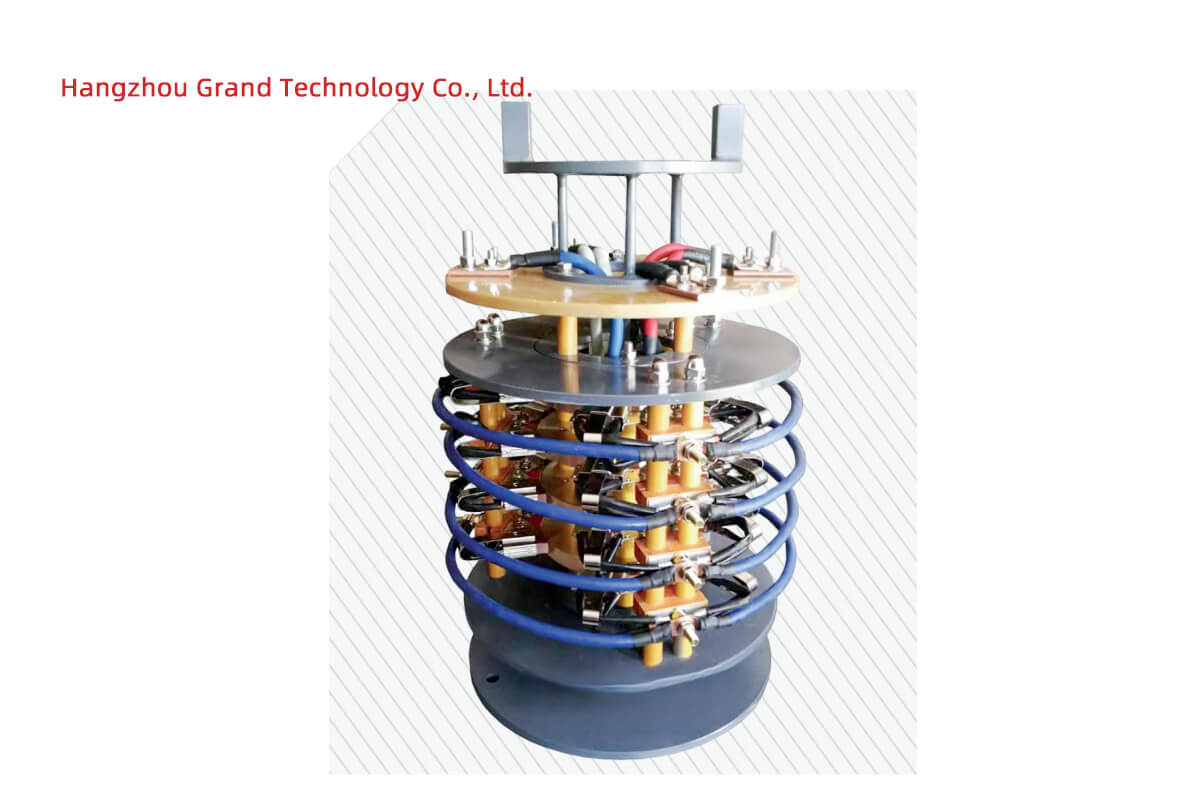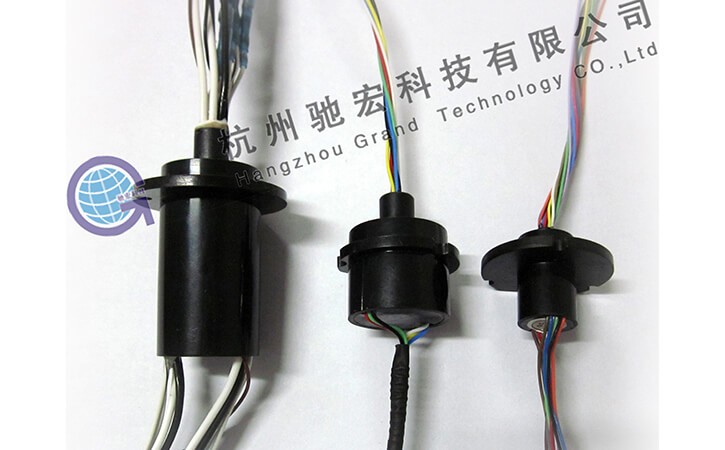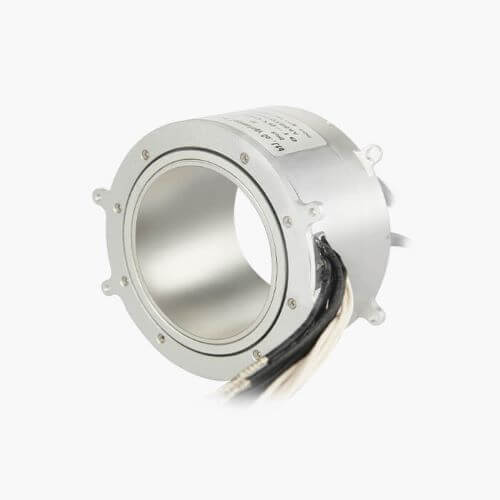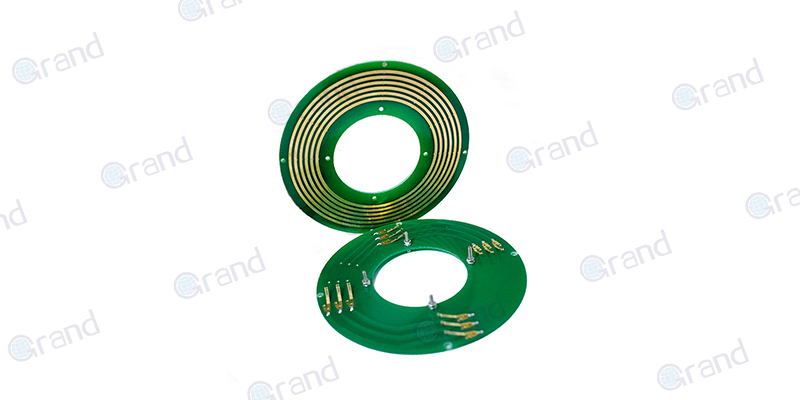This comprehensive guide dives into the fascinating world of slip ring application in rotating door. Beginning with an exploration of the fundamental pillars of slip ring technology, the article excels in lucidly illuminating its vital purpose and various advantages in these applications.
As we journey deeper, we delve into the mechanics of various types of slip rings used in rotating doors, their distinctive features, and the particular roles they play. Understanding the occasional hurdles present in the application of slip ring technology in rotating doors, the article does not shy away from discussing these technical challenges, and more importantly, it brings into focus the innovative solutions adopted to overcome them.
Featuring captivating and relatable case studies, the article makes the technology’s application tangible and engaging for all readers. As we approach the climax, we cast an eye toward what the future holds, with predictions for the innovative advancements on the horizon and the upcoming trends that might shape the industry.
Lastly, the concluding section underlines the indispensable role of slip rings in rotating doors in the modern world, encouraging the push for continued innovation. A comprehensive FAQ section also addresses common inquiries related to slip ring application in rotating doors for thorough readers.
Introduction to Slip Ring Application in Rotating Door
Background of Slip Ring Technology
Slip ring technology conceptually birthed during the infancy of electrical engineering, is at the heart of numerous mechanical and electrical systems we observe in our daily lives – from simple toys to complex aerospace mechanisms. Anchored on the principle of achieving seamless transmission of electrical power or signals between stationary and rotational parts, slip rings have firmly secured their position as a vital link in the evolution of technically advanced solutions.
A Brief Overview of Its Application in Rotating Doors
When it comes to rotating doors, the application of slip rings takes center stage in guaranteeing efficient power and signal transmission while maintaining constant spin. Think about an air curtain in a grocery store or the magnificently huge door of a hotel lobby – these rotating doors communicate regularly with sensors and control systems to ensure your safety and convenience. The silent accomplice enabling this conversation under the spinning hood? Slip rings. This article explores in detail the foundational role these components play in rotating doors, the technical hurdles they help overcome, and the prospective avenues they promise to transform.
Understanding the Role of Slip Ring Application in Rotating Doors
Detailed Explanation of How Slip Rings Work in Rotating Doors
At the heart of a rotating door’s smooth and continuous operation lies the slip ring—a device ingeniously designed to transfer power and signals to the moving part of the door without tangling wires or experiencing interruptions. Imagine the door as a giant hands-on clock, with its arms needing continuous energy to move. Slip rings sit at the center of this clock, allowing electrical current to flow from a static source onto the rotating part of the door. They consist of a stationary graphite or metal contact (brush) that rubs on the outer diameter of a rotating metal ring. As the door spins, the electrical contact between the brush and ring remains constant, enabling things like lighting, heating, or sensor operations within the door to function seamlessly.

Importance and Advantages of Slip Rings in These Applications
The incorporation of slip rings in rotating doors brings an array of benefits, fundamentally changing how such doors operate and interact with users and their surroundings. Firstly, slip rings ensure a reliable and uninterrupted power supply to the door’s various electrical components, crucial for safety mechanisms and sensory equipment that require constant operation. This reliability extends the lifespan of rotating doors by minimizing wear and tear associated with traditional, cable-based power delivery systems which can easily get entangled or wear out due to constant movement.
Moreover, the use of slip rings in rotating doors allows for a sleeker, more compact design by eliminating the need for cumbersome wiring. This not only enhances aesthetic appeal but also increases installation and operational efficiency. Architects and designers can thus integrate these doors into modern buildings without compromising on style or functionality.
For practical illustration, consider the high-end shopping center entrances or the state-of-the-art hospital doors—each relies on slip ring technology to provide safe, efficient, and reliable entries and exits, ultimately enhancing the user experience. By ensuring these crucial components—like lighting and sensors—never lose power, slip rings play an invisible yet invaluable role in the seamless operation of rotating doors, ensuring safety, reliability, and efficiency are always at the forefront.
Key Features and Types of Slip Ring Application in Rotating Doors
Slip rings serve as the linchpin in the seamless operation of rotating doors, allowing them to fulfill their roles in modern architecture and technology-driven facilities. The variety in the types of slip rings stems from the distinctive needs of these revolving doors, ranging from those requiring simple electrical connections to those demanding complex signal and data transmission capabilities.
Primarily used in compact spaces, capsule slip rings are notable for their small size and lightweight design, making them perfect for rotating doors where space is at a premium. Despite their diminutive stature, they pack a punch in terms of performance—capable of transmitting power and data efficiently. A real-world application could be seen in small to medium-sized rotating doors in boutique hotels or office buildings where aesthetics and functionality need to go hand in hand.

Featuring a hollow shaft design, through-bore slip rings are suited for applications requiring a central pass-through for shafts or other components. This type is ideal for larger rotating doors, such as those found in busy shopping malls or airports, where the door mechanisms are more complex, and there might be a need to route hydraulic or pneumatic lines in addition to electrical cables through the center of the slip ring.

These are characterized by their flat design, which is especially beneficial in applications where length is constrained and horizontal space is available. Pancake slip rings are employed in rotating doors that need to support heavier loads or where the door’s height is limited, providing an efficient solution without compromising performance.

The latest innovation in slip ring technology, wireless slip rings, uses inductive coupling to transfer power and data without direct contact. This feature virtually eliminates wear and tear, drastically reducing maintenance needs—a boon for high-traffic environments like metro stations and exhibition centers. While they might offer lower power transfer capacity than their physical counterparts, the advantages of decreased maintenance and increased reliability make them an enticing option for future-focused applications.

Each type of slip ring brings its unique set of advantages to rotating doors, ensuring they meet the diverse requirements of contemporary architectural designs. The selection often depends on factors such as the door’s size, the environmental conditions, and the specific power and data transmission needs. Through judicious choice and application of these components, designers and engineers continue to push the boundaries of what rotating doors can achieve, marrying form and function in seamless harmony.
Technical Challenges and Solutions in Slip Ring Application in Rotating Doors
Just like any piece of technology working in real-world conditions, slip rings in rotating doors face their own spectrum of challenges that need efficient, innovative solutions to ensure seamless operation.
- Common Issues/Challenges
One of the most commonly encountered issues is wear and tear. Because traditional slip rings function based on physical contact between brushes and rings, they can wear out over time, potentially leading to interruptions in data or power transfer. In busy environments, such as large shopping malls or subway stations, this can cause significant downtime and potentially untimely repair and maintenance costs.
Extreme environmental conditions can also pose challenges to slip rings, particularly those operating outdoors. Contact-based slip rings can have their performance affected by high temperatures, dust, or humidity.
Another technical challenge is signal interference. When slip rings are used for transmitting complex signals—like control or sensor data—interference from neighboring circuits or even from the environment can disrupt proper signal transmission, thereby affecting the efficiency and safety of the rotating door operations.
- Innovative Solutions
Despite these challenges, innovations in technology provide ways to bolster the efficacy of slip rings. One such advancement is the incorporation of contactless or wireless slip rings. By eliminating the physical contact between brushes and rings, wear and tear significantly reduced, resulting in lower maintenance costs and improved operation uptime.
In terms of environmental challenges, protective housings or encapsulation techniques have been developed to shield the slip rings from dust, temperature extremes, and moisture. These advancements ensure consistent performance regardless of the environmental conditions.
To tackle the problem of signal interference, advanced shielding techniques, and circuit design improvements have been introduced. The use of fiber optic rotary joints (FORJs) also offers a promising solution for high-speed data transmissions without electromagnetic interference (EMI), providing reliable and disturbance-free data transmission.
Despite the existence of these hurdles, the dynamic field of engineering offers a fertile breeding ground for innovative solutions. With constant improvements and adaptations, the use of slip rings in rotating doors continues to evolve, transforming challenges into opportunities for innovation and progress.
Case Studies on Slip Ring Application in Rotating Doors
The functional intricacies of slip rings in rotating doors are best demonstrated through real-world applications that have significantly benefited from this technology. This approach not only exemplifies theoretical knowledge but also presents tangible evidence of the real-life impact of slip rings.
The Airport Revolving Door Case
At a bustling international airport terminal entrance, slip rings have been employed to ensure the continuous, smooth operation of massive rotating doors. These doors are equipped with through-bore slip rings that allow not only electrical cables but also optical fibers to pass through their center. This setup enables the door to transmit real-time data about its operation to the facility’s management system. The slip rings ensure that the doors can handle the high traffic flow while providing data needed for maintenance and operational efficiency, resulting in reduced wait times and improved passenger experiences.
The Inclement Weather Combatant
An outdoor amusement park facing extreme weather conditions, including high winds, rain, and temperature fluctuations, posed a unique set of challenges for its rotating doors. The slip rings used in these doors were found to succumb to the environmental stress, requiring frequent maintenance. With the introduction of encapsulated and environmentally sealed slip rings rated for outdoor use, the park managed to enhance the durability and reliability of these entry points, maintaining a welcoming atmosphere for visitors despite the challenging climate.
The Hospital Application
In the healthcare sector, where hygiene and reliability are paramount, a state-of-the-art hospital implemented wireless slip rings in its rotating doors to minimize maintenance and prevent contamination. The contactless features of the slip rings alleviated concerns over particulate generation and made the doors more reliable, contributing to an antiseptic environment. These doors are now a staple at entrances, allowing effortless passage for staff, patients, and equipment without a hitch.
Classic Versus Contemporary – A Shopping Center Showdown
A case study involving two neighboring shopping centers—one with classic rotary doors fitted with pancake slip rings and another with modern rotating doors using capsule slip rings—highlights the range of applications. The classic design required slip rings that could support a heavier structure, while the cutting-edge shopping center favored a compact, aesthetically pleasing capsule design. This comparison showcases the varying requirements of rotating doors and how specific types of slip rings are chosen to match those needs directly.
Insights and Takeaways
By showcasing these diverse case studies, we see slip-ring technology’s tangible impact on enterprises and day-to-day operations. Proving their worth across different scenarios, slip rings enhance not just the functionality of rotating doors but also contribute to the overall efficiency and success of the facilities they are a part of. Providing useful insights, these cases resolve common misconceptions and encourage readers to appreciate the underlying complexities and ingenious solutions that slip rings offer in the world of rotating doors.
Future Predictions and Trends in Slip Ring Application in Rotating Doors
As with any technology, the use of slip rings in rotating doors is continually evolving. This constant progression is driven by the innovative will to overcome current challenges, adapt to new requirements, and leverage advancements in related fields.
Potential Future Advancements
The future of slip ring technology in rotating doors lies in enhancing efficiency, reducing maintenance needs, and improving data transfer capabilities.
One potential advance is the increased adoption of wireless slip rings, as they present a solution to major challenges like wear and tear and required maintenance. They offer an increased lifespan for the rotating door setup and result in reduced overall costs.
Simultaneously, advancements in materials science might contribute to the development of more resilient and efficient contact-based slip rings. This could entail the use of novel alloy compositions for the rings and brushes or improved lubrication techniques to reduce friction and wear.
In terms of data transmission, the integration of fiber optics in slip rings is expected to become increasingly prevalent. This shift would cater to the growing demand for faster, more reliable, and interference-free data transfer, especially indoors equipped with advanced sensors and security systems.
Upcoming Industry Trends
Intelligence and interconnectivity are two trends likely to define the future of rotating doors. This development coincides with the broader trend of the Internet of Things (IoT) and smart infrastructure. Expect to see slip rings playing a crucial role in enabling rotating doors to become integrated elements of connected, intelligent buildings.
Energy efficiency is another critical trend. Future rotating doors might employ energy harvesting mechanisms that use the rotational motion generated by the door to produce power. Such a mechanism could reduce the energy demands of the door system, and slip rings would play a pivotal role in transferring this harvested power.
Finally, the demand for customization is a trend that’s likely to grow. Be it the size, functionality, or aesthetics, the rotating door systems of tomorrow will require slip rings tailored to their needs. This will push manufacturers to diversify their product range, offering solutions from ultra-compact modules to highly specialized, application-specific slip rings.
While predicting the future always involves some level of speculation, the trends and potential advancements discussed here are grounded in ongoing developments within slip ring technology and the demands of an ever-evolving market. Continuing to innovate and adapt, slip rings will remain an integral part of rotating doors, driving their functionality, performance, and integration into the smart infrastructure of the future.
The Importance of Slip Ring Application in Rotating Doors Moving Forward
In the landscape of architectural design and functionality, the compatibility of structure and technology paves the way for efficiency, convenience, and innovation. Among the myriad of technological advancements, slip rings embedded in rotating doors exemplify a seamless fusion of mechanical ingenuity and practical utility. Their application not only underlines an evolved standard in architectural functionality but also mirrors the industry’s aspirations for tomorrow.
Reiterating the Benefits and Necessity
The integration of slip rings in rotating doors heralds numerous benefits—uninterrupted power supply, continuous data transmission, and the facilitation of complex security systems—all while the doors perform their perpetual dance of rotation. These aren’t mere conveniences but necessities in an era that demands both aesthetic appeal and functional sophistication in public and private spaces.
Real-World Impact: Picture the revolving doors at the entrance of a globally renowned hotel chain, functioning flawlessly round the clock, all year round. Here, slip rings silently but powerfully ensure that the doors not only provide a grand entrance but also serve as a conduit for security data and environmental control systems, enhancing both the aesthetic value and safety protocols of the establishment.
A Call for Continued Innovation
The journey of slip rings within rotating doors is far from static; it is a path marked by continuous evolution and adaptation. In the spirit of innovation, it enjoins the industry—manufacturers, designers, and architects—to not only sustain but also elevate their efforts in research, design, and technological integration.
Fostering Innovation: The essence of pushing boundaries could be embodied in a tech startup, partnering with traditional manufacturers to create a hybrid slip ring that harnesses energy from the door’s motion to power its own lighting—a leap toward sustainability and autonomy.
Looking Ahead
The narrative of slip rings in rotating doors is rich with potential, illustrating not just where we are but where we could go. It beckons a future where doors not only connect spaces but also embody the seamless integration of technology and design, serving functions we have yet to imagine.
Vision for the Future: In a smart city, every revolving door could become a node in an interconnected grid, collecting and transmitting environmental data while contributing to the city’s green energy initiatives. Here, the slip ring isn’t just a component; it’s a catalyst for innovation and sustainability.
Final Reflections
As we close this chapter on the significance of slip rings in rotating doors, let us carry forward the understanding of their pivotal role and the imperative of fostering innovation. The rotating door, equipped with its silent sentinel—the slip ring—stands not just as a testament to today’s engineering feats but also as a gateway to tomorrow’s possibilities.
FAQs About Slip Ring Application in Rotating Doors
Slip rings play a crucial role in the functionality of rotating doors, yet they remain a component that many may not fully understand. Here, we’ll explore some frequently asked questions, using real-life scenarios to clarify the importance and application of slip rings in this context.
Q: What Are Slip Rings and How Do They Work in Rotating Doors?
A: Slip rings are electromechanical devices that allow the transfer of power and electrical signals from a stationary to a rotating structure. In rotating doors, they are the unseen heroes that enable the transfer of electricity and data without tangling wires, ensuring the door can spin freely.
Real-World Example: Consider a busy airport with automatic rotating doors constantly in use. The slip rings within these doors enable the transmission of power to the door’s motor and send operational data to the control system without interruption, no matter how many rotations the door makes.
Q: Why Can’t We Use Wireless Technology Instead of Slip Rings in Rotating Doors?
A: While wireless technology is making strides, it still has limitations in power transmission capacity and reliability when compared to slip rings, especially in applications that require the continuous transfer of high power or signals.
Case Study: A rotating door in a shopping center attempted to use wireless power transmission but encountered frequent power drops and signal interference caused by the metal structures around it, which led to the reinstallation of slip rings to ensure consistent door operation.
Q: How Long Do Slip Rings Last in Rotating Doors?
A: The lifespan of a slip ring in a rotating door heavily depends on its usage and environment. Most are built to last tens of millions of rotations, translating to several years in typical conditions.
Actionable Advice: Regular maintenance and choosing a slip ring designed specifically for the door’s intended use can significantly extend its lifespan.
Q: Can Slip Rings in Rotating Doors Affect Data Transmission?
A: Yes, slip rings can transmit not only power but also data. They must be designed to minimize electrical noise to avoid any data corruption, ensuring that any embedded sensors or security systems function correctly.
Real-World Example: In a high-security building, the rotating doors are equipped with slip rings that facilitate the flawless operation of biometric scanners and cameras as the door rotates, helping to maintain a secure environment.
Q: Are There Environmentally Friendly Options for Slip Rings in Rotating Doors?
A: Eco-friendly slip ring options are indeed available. From using materials sourced from responsible providers to designs that reduce energy consumption, manufacturers are mindful of the environmental impact.
Case Study: A rotating door equipped with an energy-harvesting slip ring at a university campus not only provided seamless access but also contributed to the institution’s green initiatives by partially powering its own lighting.
See What We Can Do
